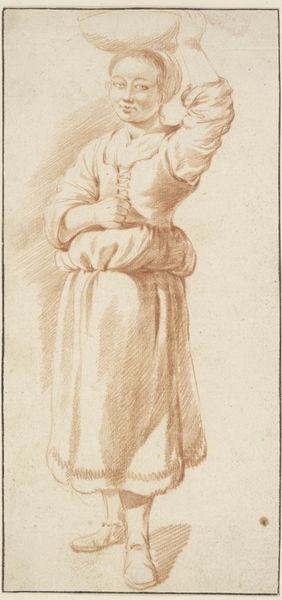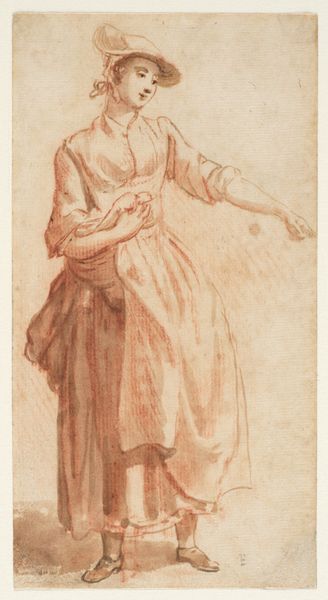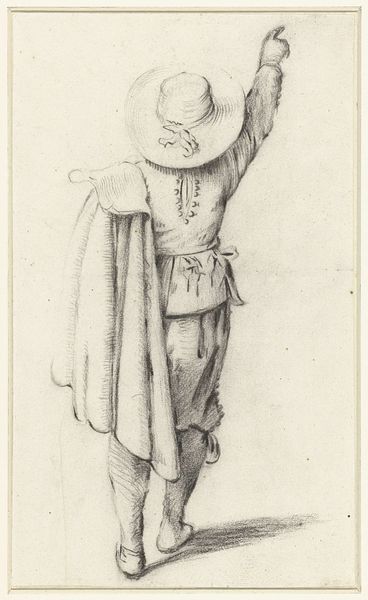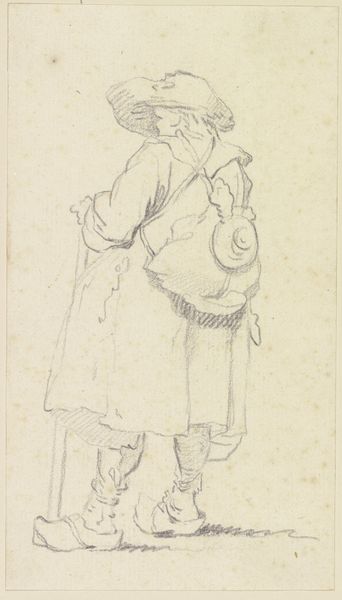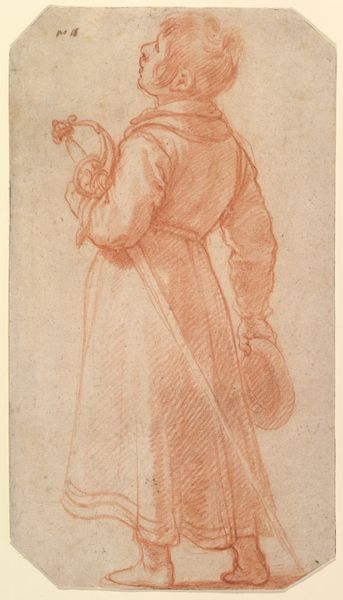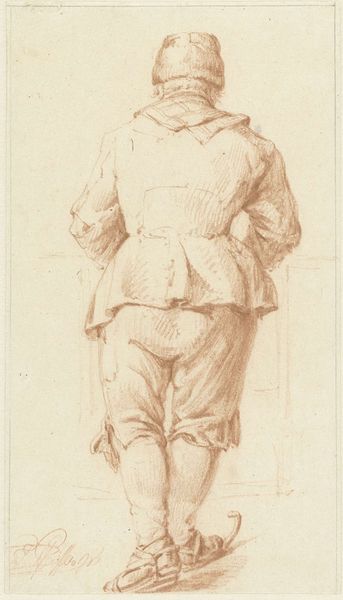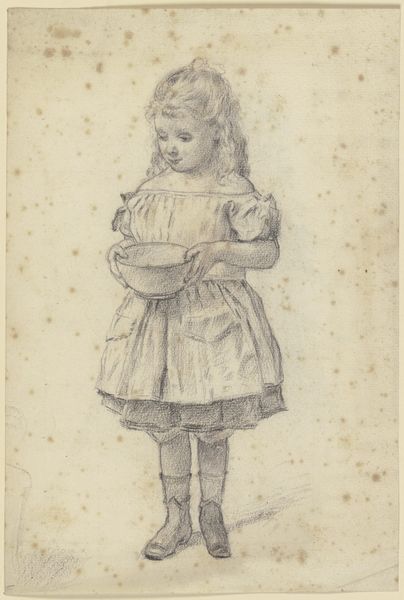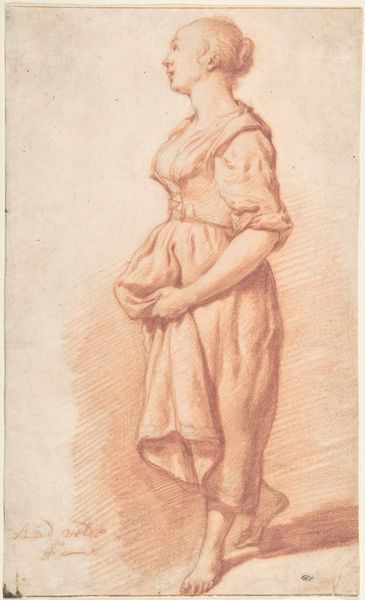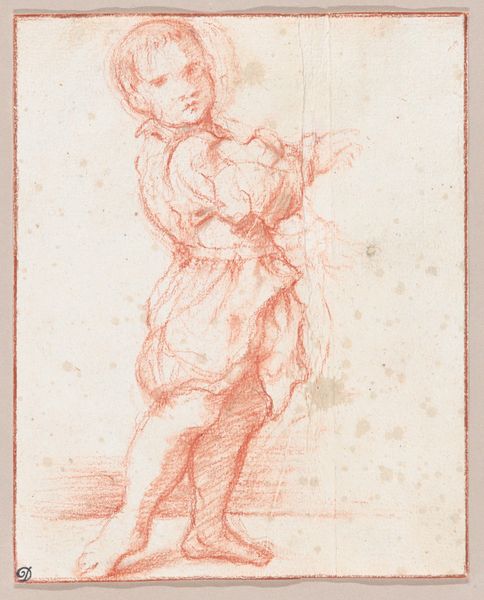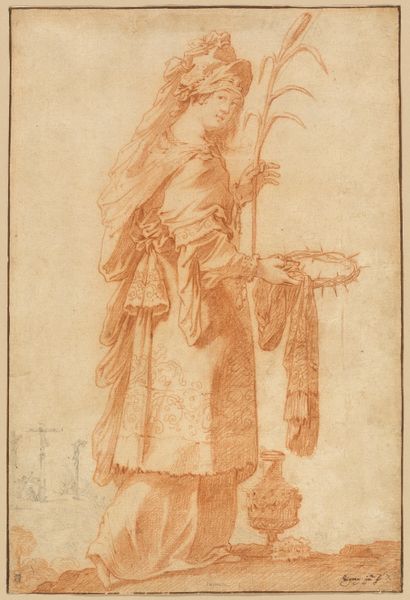
drawing, pencil
#
portrait
#
pencil drawn
#
drawing
#
baroque
#
dutch-golden-age
#
pencil sketch
#
figuration
#
pencil drawing
#
pencil
#
portrait drawing
#
genre-painting
#
realism
Dimensions: height 160 mm, width 92 mm
Copyright: Rijks Museum: Open Domain
Editor: Here we have "Spinnende vrouw, staand" by Adriaen van de Velde, a pencil drawing made sometime between 1646 and 1672. It's a simple, almost casual sketch, yet the woman’s posture suggests a certain weight. How do you interpret this work? Curator: This piece offers a glimpse into the everyday life of women in the Dutch Golden Age, particularly concerning labor and domesticity. While seemingly simple, the woman’s act of spinning yarn was crucial to the household economy. Her turned back invites us to consider her social position, not as an individual, but as a representation of a working class often unseen and unheard in more 'heroic' portrayals. Do you notice how the artist renders her clothing? Editor: Yes, her clothes seem quite functional. And the style looks typical for women of that era, though rather plain compared to upper-class portraits. Curator: Exactly. Van de Velde isn't just showing us 'a woman'; he's presenting a narrative of labor and the quotidian experience of women in 17th-century Netherlands. Consider how class intersects with gender here. How might her economic activity have shaped her social identity, especially given the patriarchal structures of the time? Editor: It makes me think about the untold stories behind these images – the labor, the social expectations, the sheer amount of work these women were doing. Curator: Precisely! This piece can encourage dialogue on women’s historical contributions to economic systems, prompting crucial conversations on gender, labor, and historical representation within art history. Editor: That’s a really insightful perspective. I had just seen it as a simple sketch, but now I see it as something more layered, a reflection of the social context of the time. Curator: Art has that potential. It's not just about what’s visible, but also about the narratives embedded within. I think we both came away seeing so much more.
Comments
No comments
Be the first to comment and join the conversation on the ultimate creative platform.
